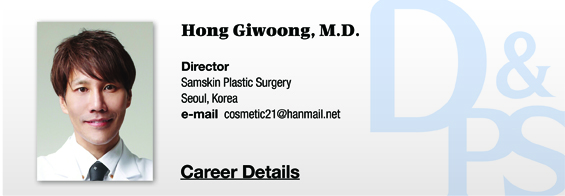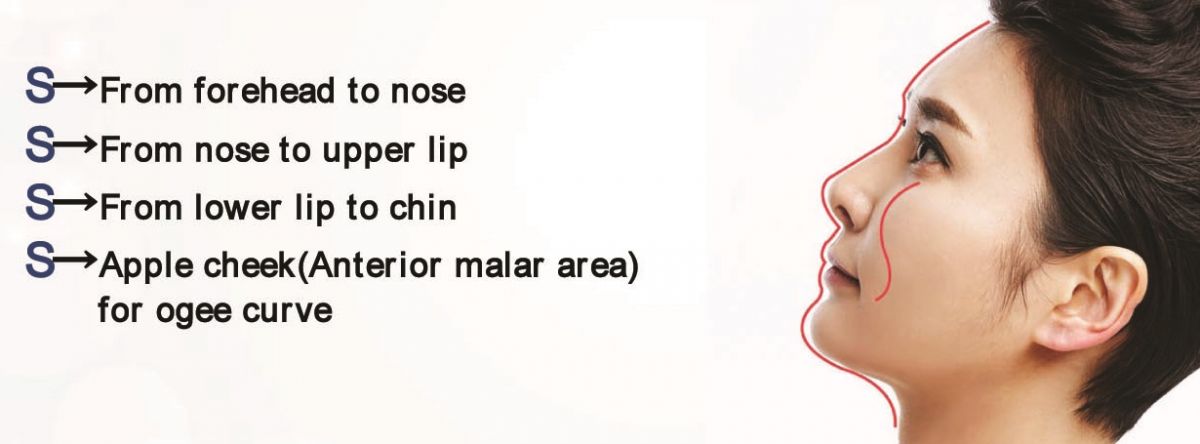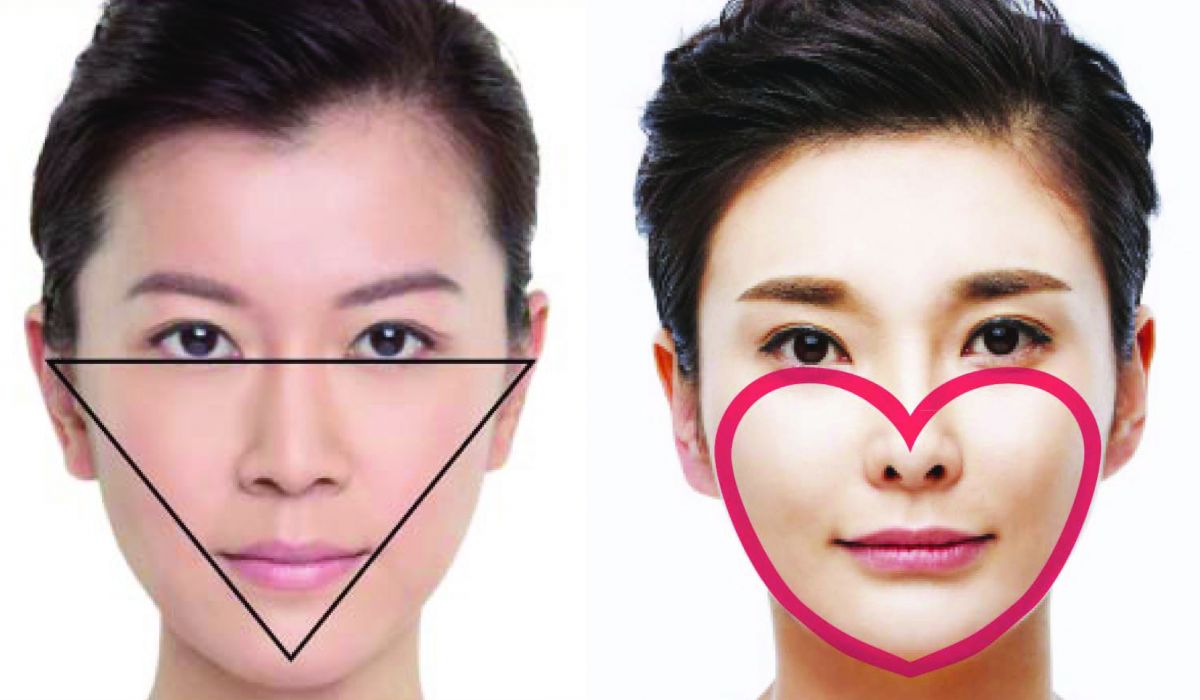
As shown in <Figure 5>, various angles and mathematical measurements can be used to describe an attractive and youthful profile of the face. However, in clinical practice, an ideal profile of the face would have more rounded lines connecting from the forehead to the nose, from the nose to the lips, from the lips to the chin as well as rounded outlines of the cheekbones(Figure 6). These four S-lines would create adequate volume and youthful looking face.

Figure 5. Criteria for ideal facial profile

Figure 6. Facial 4S lines for ideal facial profile.
From the frontal view, the face should have an inverted triangle or heart-like shape as shown in <Figure 7>. This oval shape creates a slim and youthful outline of the face. In addition, various minimally invasive procedures can be combined for wrinkle removal and skin rejuvenation.

Figure 7. Oval shape face.
Approaches for Creating an Attractive Face
– Harmony Program: an effective patient consultation program developed in Europe
Harmony Program is a total approach, consultation and management program developed in Europe for improving patient care in the field of minimally invasive aesthetic treatments. Based on the patient’s self-evaluation and medical background, the medical staff develops a treatment plan during consultation. After being clearly informed of the plan, the patient finally chooses the procedure. The chosen treatment is carried out and post-treatment follow up and a plan for additional future treatments are developed if needed.
[Advertisement] MAGNUM(Q-switched Nd:YAG Laser) – Manufacturer: (www.i-dana.com)]
At a closer look, in step 1, standardized questionnaires and prior consultation with the medical staff can help identify patient details, including previous medical procedures, medical background, motivation for seeking treatment, expectations, patient’s self-evaluation, demands, personality, and financial matters, etc. In step 2, objective methods are used to assess facial symmetry, volume, sagging, wrinkles, and skin conditions using the above mentioned standards of attractiveness. Based on this data, the medical staff recommends and develops an individualized treatment plan including the target areas, type of procedures, possible degree of correction, and whether combination of various treatments are needed for better results. Lastly, the patient decides on the treatment based on the information provided and cost in the final consultation session.
-To be continued




















